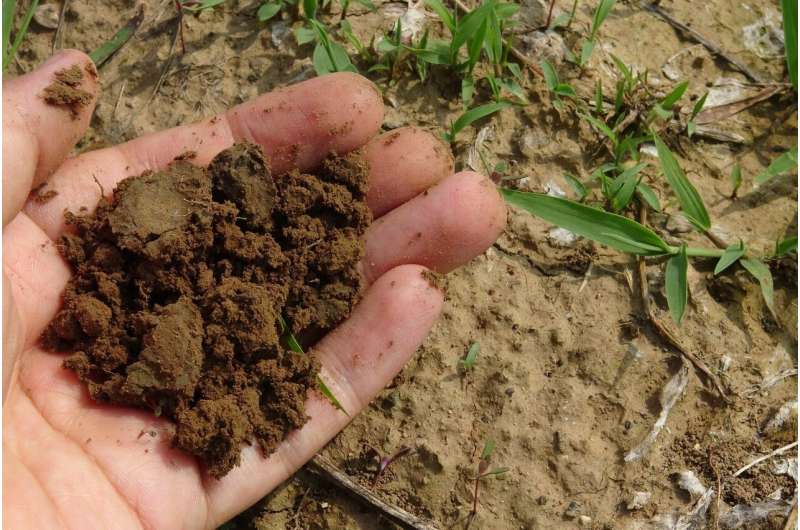This article has been reviewed according to Science X's editorial process and policies. Editors have highlighted the following attributes while ensuring the content's credibility:
fact-checked
peer-reviewed publication
proofread
How microbes die influences soil carbon content, study finds

Even microorganisms do not live forever. However, the manner in which these tiny soil organisms die has an effect on the amount of carbon they leave behind. These are the latest results of a study carried out by microbiologist and ecologist Dr. Tessa Camenzind from Freie Universität Berlin, together with Humboldt Research Award winner Johannes Lehmann, visiting researcher at Freie Universität Berlin from Cornell University, New York (U.S.), and their colleagues.
The results of their study have now been published in the journal Nature Geoscience under the title "Formation of Necromass-Derived Soil Organic Carbon Determined by Microbial Death Pathways." The researchers' results contribute to the understanding of climate change and CO2 emissions.
Microorganisms are all around us, including in the ground beneath our feet. They play an essential role in ensuring that nutrients and carbon continue to circulate, safeguarding soil as an important resource. However, these microorganisms do not live forever; like all living things, they eventually die.
"In our research, we focused on how microorganisms in the soil die and what exactly remains of these dead microorganisms (known collectively as microbial necromass) at the end of their short lives. You might be wondering why we should be concerning ourselves with the deaths of individual cells in our soil. Well, interestingly enough, these deaths are a deciding factor in the amount of carbon that soil can sequester and store, and for how long," explains Dr. Camenzind. This is something that could well be of interest to scientists and politicians with regard to rising levels of CO2 in the atmosphere and the consequences this will have on our climate.
Soil is the largest carbon store on Earth—storing more carbon than all plants and our atmosphere put together. Contrary to what was previously believed to be the case, a considerable amount of this carbon—more than 50%—is introduced to the soil via the remains of dead microorganisms. "It may sound macabre, but knowing more about how and why these microorganisms die and what processes are involved is essential for understanding how carbon is introduced to the soil and how stable this process is under varying conditions," says Dr. Camenzind.
But what constitutes a cause of death for a microorganism? Soil is by no means a safe habitat. Anything looking to survive here is subject to starvation, drought, and extreme heat or cold. Microbial organisms are also constantly in competition with one another for essential resources, with some microorganisms not afraid to emit deadly metabolites in order to gain the upper hand. Additional sources of danger include protists (single-cell organisms), tiny animals living in the soil, and even bacteria. Some hunt microorganisms specifically, while others "graze" large areas. Viruses are also common in the soil layer and kill off a considerable number of bacteria. And, of course, a number of human activities also lead to changes in the natural balance.
"In particular, we were able to find out which chemical changes take place during these processes, allowing us to better understand what microbial necromass is comprised of," explains Camenzind. On the molecular level, it makes a difference whether a bacterium is eaten and digested by a springtail (soil organism), whether it dries out, whether it is re-programmed by a virus, or whether a predatory bacterium drains it of its nutrients. At the same time, the hyphae of fungi also play an interesting role when it comes to the carbon content of soil.
"They 'move' through the soil by creating new hyphae, meaning that they are constantly leaving dead hyphae behind them. By doing so, it seems that they introduce a great deal of carbon into the soil," says Dr. Camenzind.
More information: Tessa Camenzind et al, Formation of necromass-derived soil organic carbon determined by microbial death pathways, Nature Geoscience (2023). DOI: 10.1038/s41561-022-01100-3
Journal information: Nature Geoscience
Provided by Freie Universität Berlin



















